PLC (Programmable Logic Controller) programming is one of the core skills in the field of industrial automation. For beginners, mastering the basic logic of programming and gradually accumulating experience is key to improving programming skills. This article will start with the simplest momentary control and gradually introduce basic programs such as self-locking and interlocking, helping beginners to improve their programming ability through continuous accumulation of code.
1. Starting with Momentary Control
Momentary control is the most basic program in PLC programming, usually used to control the instantaneous start and stop of devices. For example, the motor starts when the button is pressed, and stops when the button is released.
Example Program:
|—-[ ]—-( )—-|
| Start Button Output Coil |
Logic Explanation: When the start button (input signal) is pressed, the output coil (such as the motor) is energized; when the button is released, the coil is de-energized.
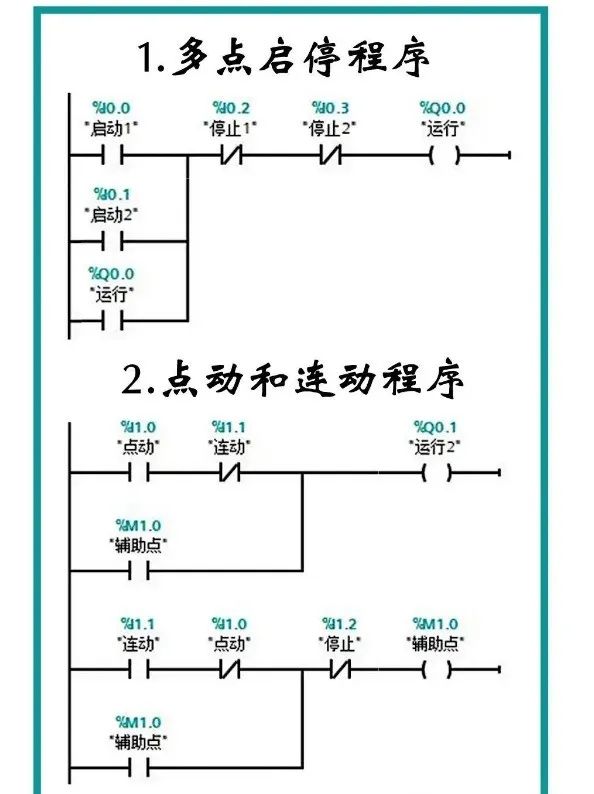
2. Self-Locking Control
Self-locking control adds a self-holding function based on momentary control, commonly used for devices that need to run continuously. For example, after pressing the start button, the motor runs continuously until the stop button is pressed.
Example Program:
|—-[ ]—-+—-( )—-|
| Start Button | Output Coil |
|—-[ ]—-+ |
| Stop Button |
Logic Explanation:
When the start button is pressed, the output coil is energized and self-locks, and the motor runs continuously.
When the stop button is pressed, the self-locking is released, the output coil is de-energized, and the motor stops.
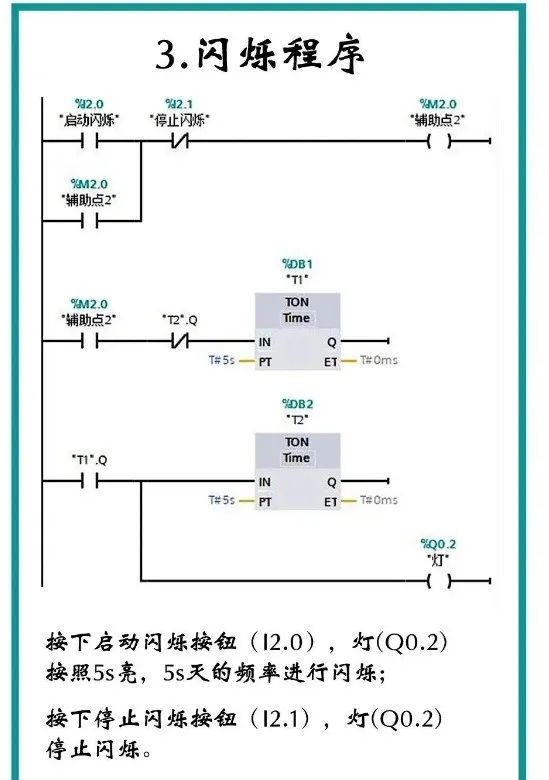
3. Interlocking Control
Interlocking control is used to prevent multiple devices or actions from running simultaneously, commonly used in scenarios that require mutually exclusive operations. For example, the motor cannot rotate forward and backward at the same time.
Example Program:
|—-[ ]—-+—-[ ]—-( )—-|
| Forward Button | Reverse Coil | Forward Coil |
|—-[ ]—-+—-[ ]—-( )—-|
| Reverse Button | Forward Coil | Reverse Coil |
Logic Explanation:
When the forward button is pressed, the forward coil is energized and self-locks, while interlocking the reverse coil.
When the reverse button is pressed, the reverse coil is energized and self-locks, while interlocking the forward coil.
The forward and reverse coils cannot be energized simultaneously, ensuring that the motor does not rotate both forward and backward at the same time.
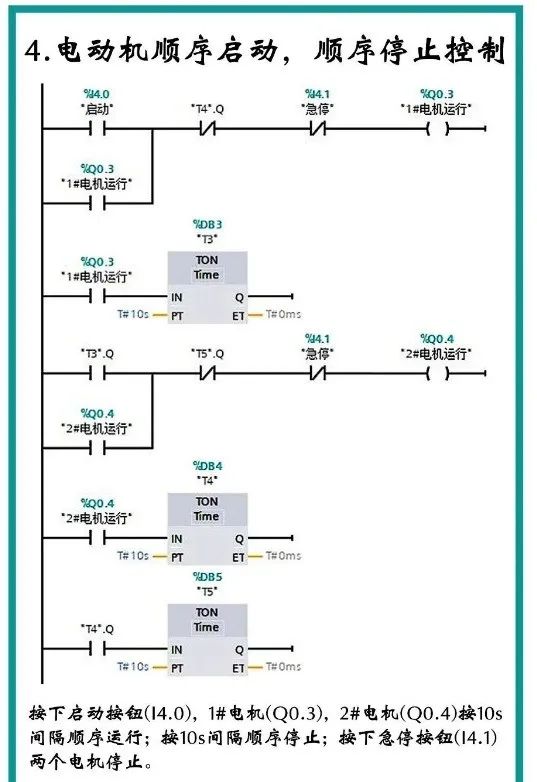
4. Gradually Expanding Programs
After mastering basic programs such as momentary, self-locking, and interlocking, you can gradually expand to more complex logic, such as:
-
Timer control: Implementing delayed start or stop through timers.
-
Counter control: Controlling the number of device operations through counters.
-
Sequential control: Implementing sequential start and stop of devices through multiple steps.
-
Analog control: Achieving precise control (e.g., temperature, pressure, etc.) through analog input and output.
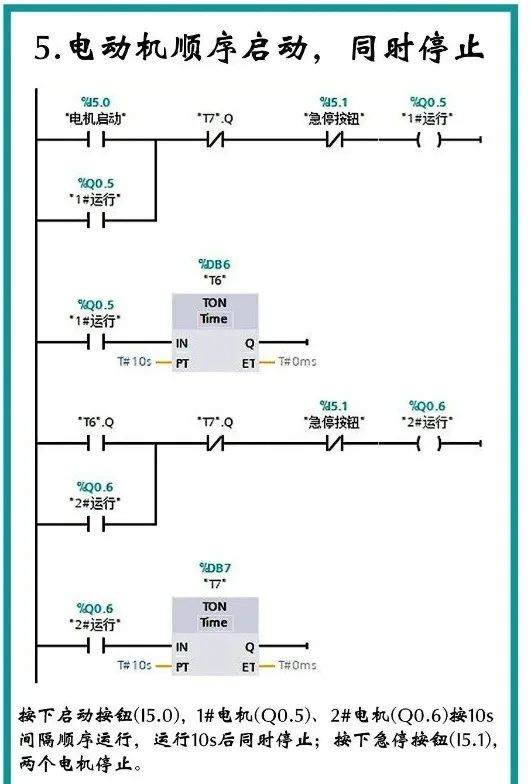
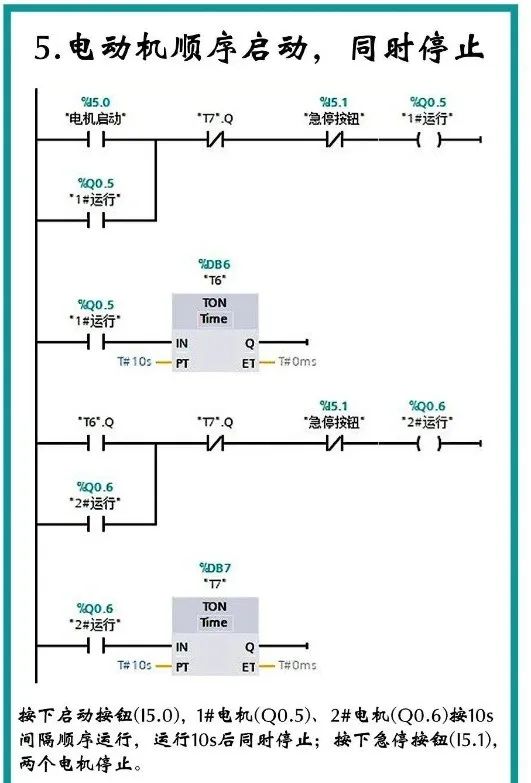
5. Accumulating Code Volume to Improve Programming Level
Improving PLC programming skills relies on accumulating code volume. Beginners can start with simple programs and gradually increase the complexity and functionality of the programs. Here are some suggestions:
-
Practice more: Write programs through actual projects or simulated environments.
-
Analyze cases: Learn and analyze mature PLC program cases to understand their design ideas.
-
Debug and optimize: Discover problems and optimize code through program debugging to improve programming efficiency.
-
Learn advanced features: Gradually learn advanced PLC features such as PID control, communication protocols, etc.
6. Conclusion
Learning PLC programming is a process that goes from simple to complex. By mastering basic programs such as momentary, self-locking, and interlocking, and gradually expanding functionalities, beginners can accumulate experience and improve their programming level. The improvement of programming ability relies not only on theoretical knowledge but also on continuous accumulation and optimization of code through practice. Persist in learning and practicing, and gradually master the core skills of PLC programming, which will lay a solid foundation for career development in the field of industrial automation.
Starting with simple momentary control, gradually mastering basic logic such as self-locking and interlocking, and continuously accumulating code volume, your PLC programming level will gradually improve, ultimately enabling you to meet complex industrial automation control needs.

